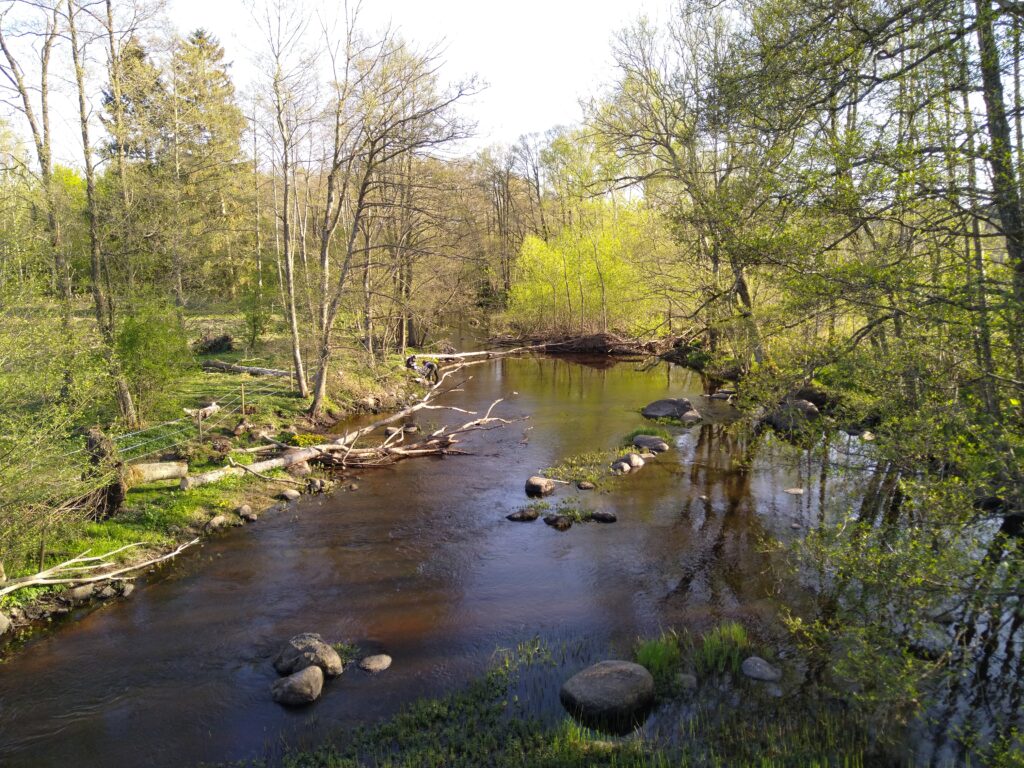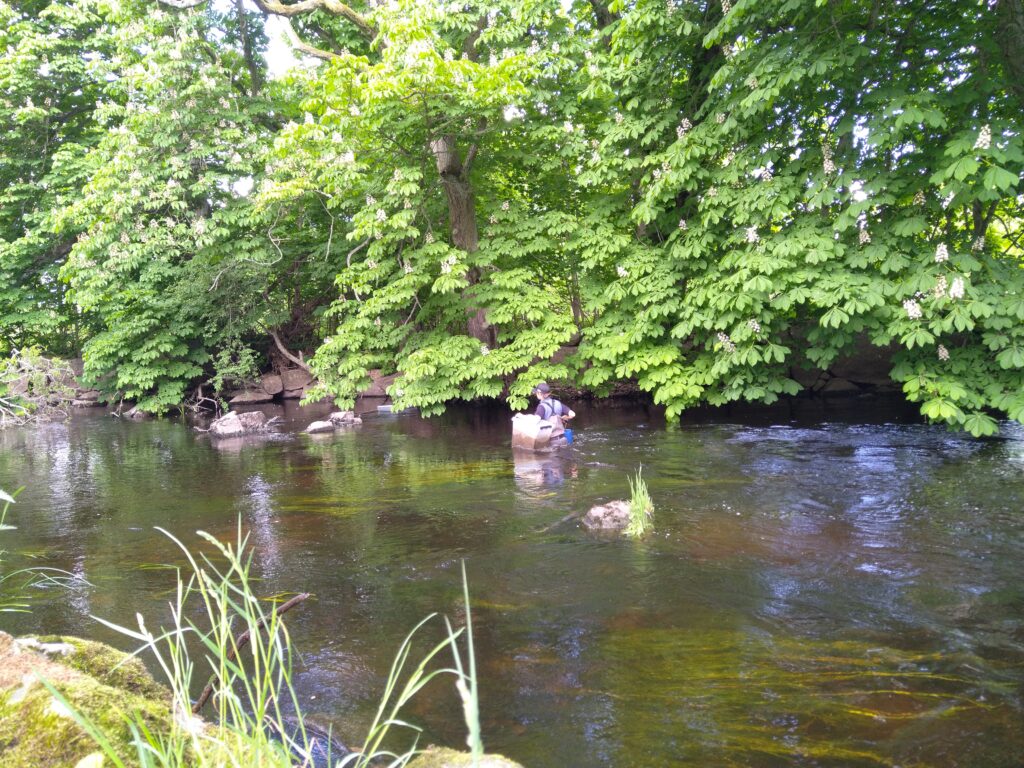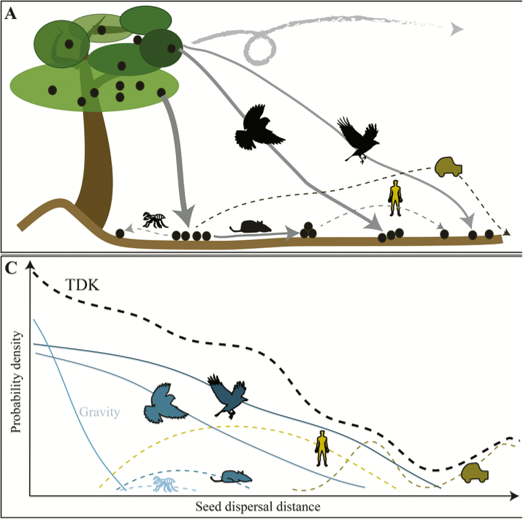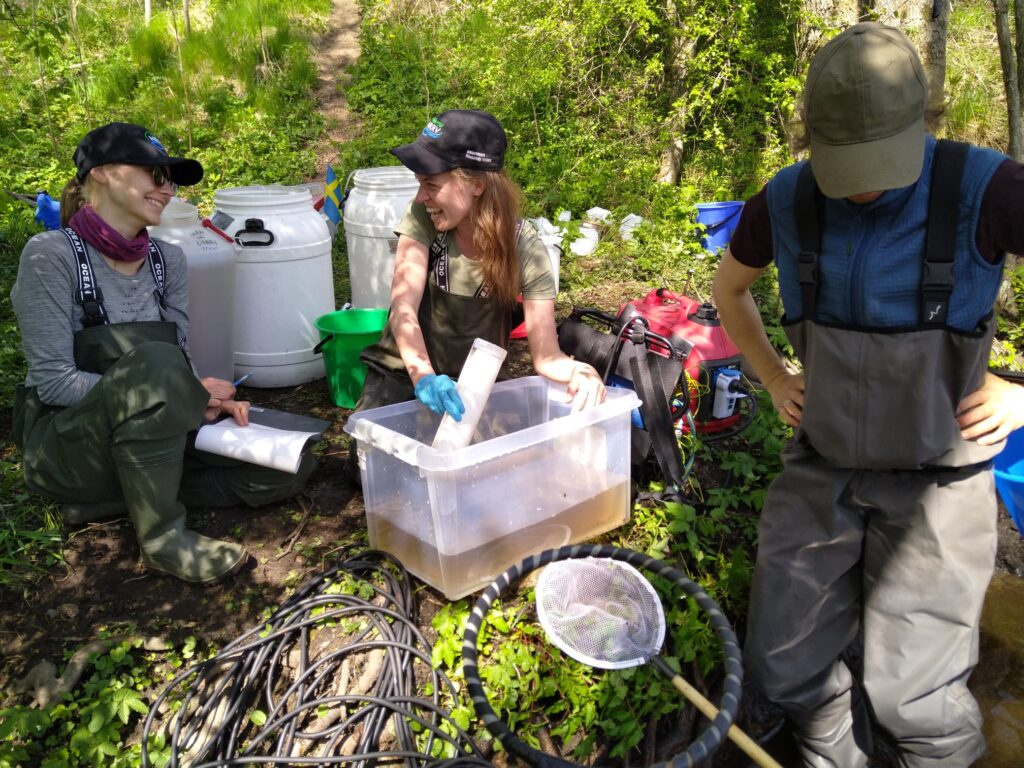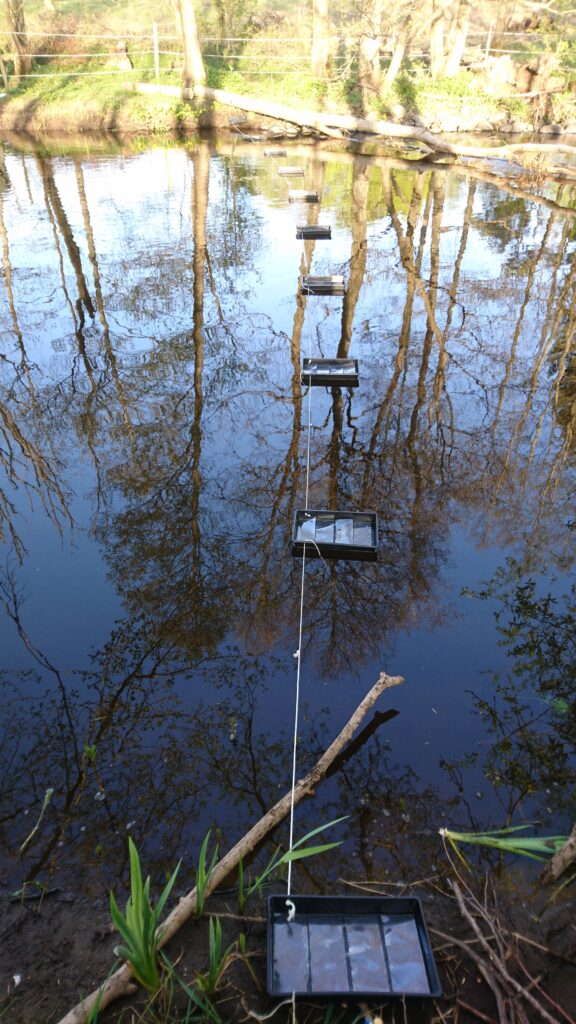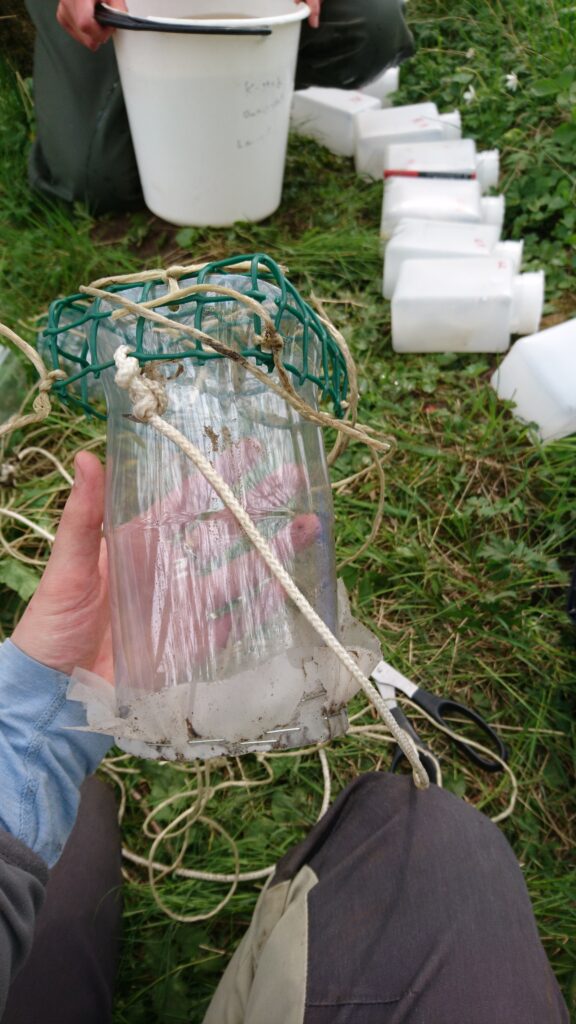Fish, poop and plants: crap research isn’t as bad as it might sound
Posted by Louis Addo | Freshwater mussels, riparian vegetationThe Scanian river Vramsån (Fig 1) has been a stage for RivEM research before, but not with the wide range of methods that Ph.D. candidate Sebastian, visiting intern Hanna Paikert and Ph.D. candidate Jacqueline tried out in May this year!
Vramsån has long been used for hydropower purposes but is now in the process of being restored to a more natural flow regime. It is one of seven rivers of interest to the LIFE Connects conservation project, which aims to improve their ecosystem functions and ecosystem services. Under six years the project will work with removal of hydropower plants and dams, create fauna passages and improve migration paths at barriers. The project also works on innovative passage solutions that enables both hydropower production and fish migration as well as riverbed restorations to gain more natural habitats and improved water quality. The goal is to improve survival and production of threatened fish species such as Atlantic salmon and European eel as well as the endangered mussel species Freshwater pearl mussel and Thick-shelled river mussel. Research and information efforts linked to river restorations within the project will constitute an important part of the project, that you can read more about on https://lifeconnects.se/!
With that in mind, the first goal of this research adventure was to collect fish and mussel specimens for a study on the impact of light pollution on the host-parasite relationship of the endangered Thick-shelled river mussel (Unio crassus) and its host the common Eurasian minnow (Phoxinus phoxinus).
This incredibly endangered, and ecologically significant mussel has rapidly diminishing populations, something that LIFE Connects is trying to change. While many people don’t think much of these simple bivalves they play a key role in keeping environmental conditions stable. By filtering suspended particulates from the water column large populations of mussels can keep water cleaner, a benefit to both fish and humans. When they need to poop, the majority goes into the surrounding sediment, fertilizing it and improving both benthic fauna communities and plant growth. Together, these help fortify fish and bird populations. Not only does the increased plant growth provide habitat but the increase in benthic fauna provides more food sources as a large part of benthic fauna communities are comprised of the larval forms of terrestrial insects.
One of the main ways we try to prevent the Thick-shelled river mussel from going extinct is to increase the chances of their reproductive success, a complex cycle and significant factor in their population decline. These mussels are partial parasites on fish, with this extra step making their reproduction rate be quite a bit slower than other freshwater bivalves. We can help by forcefully infecting host fish with mussel larvae and keeping them safe for a large part of the reproductive cycle before releasing them back into the wild. As such the first part of this study was to go electrofishing for fish to use as hosts in for the mussels to be reintroduced, primarily minnows and trout. The trout got to stay in the river (Fig 2) while the minnows were destined to come back to KAU to be used in some experiments. More on that in another blog post
Re-naturalizing the flow regime of a river doesn’t just affect the fish and their ecological functions in it, but other processes as well. Dispersal is one of these processes, and is thought to be important for the composition of all plant communities, including those that we find in-water and in the riparian zone. There are many ways in which plants disperse (Fig 3), and a large part of Jacqueline’s Ph.D. project focuses on dispersal via water. Most of this dispersal is in the direction of the water flow, but many people overlook a tiny component: the animals in the water that swim in the opposite direction! These animals can carry seeds on their outsides or, via foraging, in their bodies. This relatively little-studied function called endozoochory builds on the thought that animals spread other species by eating them in one place and pooping them out elsewhere.
A second goal of this week was finding out whether this pathway is an important route for riparian vegetation in Vramsån. The fish that we were catching thus had a double function: not only will they be used for mussel larva infestation, but we collected their poop to compare the seeds therein with seeds and vegetation in other parts of the ecosystem (Fig 4).
Which other parts, you ask? Well, of course, fish stomachs are not the only place where you find seeds – far from that! Given that there are so many ways in which plants disperse, we planned a comparison of the seed composition in different parts of the ecosystem. So, equipped with self-built traps to filter seeds from the water (Fig. a), to catch seeds from the air (Fig. b) and loads of boxes to sample riparian litter, riparian soil and aquatic soil, we went to work!
It took some hours to get everything in place, but while Seb will spend his spring infesting his fish in Karlstad University’s (KAUs) aquarium facility, Hanna and Jacqueline are running a germination study to see which species pop up in the samples of the different ecosystem parts. After two weeks in KAUs plant growing room, over 200 seeds of at least 10 different species have germinated across the different sample types. We are giving the samples a few more weeks to see what else poops up before we’re going to try and sniff out if there’s anything interesting in there!



